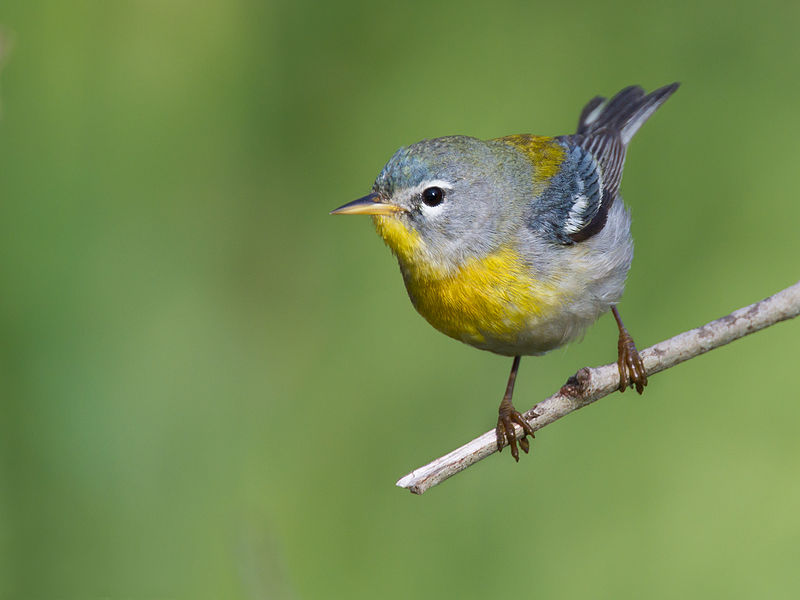Northern Parula
The Northern Parula (Setophaga americana) is a small New World warbler. It breeds in eastern North America from southern Canada to Florida. The Northern Parula is one of the smaller Northern migratory warblers, often being one of the smallest birds in a mixed feeding flock besides kinglets or gnatcatchers. Length is 10.8 to 12.4 cm (4.3 to 4.9 in), wingspan is 16 to 18 cm (6.3 to 7.1 in) and body mass is 5 to 11 g (0.18 to 0.39 oz). Among standard measurements, the wing chord is 5.1 to 6.5 cm (2.0 to 2.6 in), the tail is 3.7 to 4.5 cm (1.5 to 1.8 in), the bill is 0.8 to 1.1 cm (0.31 to 0.43 in) and the tarsus is 1.5 to 1.8 cm (0.59 to 0.71 in). This species has mainly blue-gray upper parts, with a greenish back patch and two white wing bars. The breast is yellowish shading into the white belly. The summer male has bluish and rufous breast bands and prominent white eye crescents. At the end of the breeding season, individuals molt into a duller version of the breeding plumage. Females are similar-looking but tend to be duller and lack the breast bands. The unique breastband fades in males and may disappear altogether in females.
Their song is a click-like trill or buzz, zeeeeee-yip. Their call is a soft chip.


